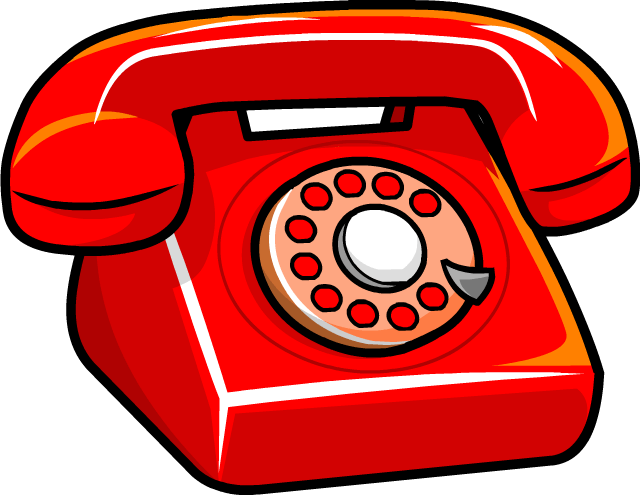The laundry room is often an overlooked but essential space in our homes. It’s where the magic happens – the transformation of dirty clothes into fresh, clean ones. Whether you’re a seasoned homeowner looking to upgrade or a first-time buyer setting up your laundry room, selecting the right washer and dryer is crucial. In this comprehensive guide, we’ll explore everything you need to know to make an informed decision when buying a washer and dryer.
Assessing Your Laundry Room
Before diving into the world of washer and dryer options, let’s begin by understanding your laundry room’s space and requirements. Here are a few key factors to consider:
- Room Size: Measure your laundry room to determine how much space is available for your appliances. This will help you decide on the size and type of washer and dryer that will fit comfortably.
- Utility Connections: Check if your laundry room has the necessary utility connections, including water supply, drainage, and electricity. If not, you might need to budget for installation or choose ventless models.
- Ventilation: Adequate ventilation is crucial to prevent moisture buildup and mold. Ensure your laundry room has proper ventilation options.
Types of Washers and Dryers
There are several types of washers and dryers available, each with its unique features and benefits. Let’s explore the most common options:
Washer Types:
- Top-Load Washers: These are the traditional washers with a lid on top. They’re easy to load and are available in both agitator and high-efficiency models.
- Front-Load Washers: Front-load washers are known for their efficiency and larger capacity. They use less water and have various wash cycle options.
- Stackable Washers: Perfect for small laundry rooms, stackable washers save space by stacking the dryer on top of the washer.
- Compact Washers: Ideal for tight spaces or apartments, compact washers are smaller in size but still pack a punch in terms of performance.
Dryer Types:
- Electric Dryers: These dryers use electricity to generate heat and require a 240-volt power outlet. They are commonly found in most homes.
- Gas Dryers: Gas dryers are more energy-efficient and cost-effective in the long run, but they require a natural gas connection.
- Ventless/Condenser Dryers: Ventless dryers do not require an external vent for moisture removal, making them suitable for apartments and spaces with limited ventilation.
Features to Consider
When choosing your washer and dryer, several features can enhance the functionality and convenience of your laundry routine:
- Capacity: Consider the size of your household and the amount of laundry you do. A larger family may require a washer and dryer with a higher capacity.
- Energy Efficiency: Look for appliances with an ENERGY STAR certification to ensure they are energy-efficient, which can save you money in the long term.
- Wash and Dry Cycles: The variety of wash and dry cycles can make your life easier. From delicate to heavy-duty cycles, having options ensures you can care for all your laundry needs.
- Noise Level: Some washers and dryers can be noisy, so if your laundry room is close to living spaces, opt for quieter models.
- Smart Features: Modern appliances often come with smart features, such as remote control and monitoring through smartphone apps, saving you time and effort.
- Warranty: Ensure your appliances come with a warranty for peace of mind and protection against unexpected repairs.
Maintenance and Care
Maintenance and care are crucial aspects of ensuring the longevity, efficiency, and safety of your washer and dryer. Regularly attending to these tasks can prevent malfunctions, reduce the risk of breakdowns, and contribute to the overall performance of your laundry appliances. Let’s delve deeper into the maintenance and care practices for both washers and dryers:
Washer Maintenance and Care:
- Clean the Lint Filter: Many modern washers come with a lint filter that should be cleaned after each use. This filter captures lint and debris from your clothes, preventing them from clogging the drain and causing drainage problems.
- Inspect Hoses and Connections: Regularly check the water inlet and drain hoses for any signs of wear, cracks, or leaks. Ensure that all connections are tight and secure to prevent water leakage.
- Use the Right Detergent: Different types of washers, especially high-efficiency models, may require specific detergents. Using the wrong detergent can create excessive suds and lead to poor cleaning or even damage the machine. Follow the manufacturer’s guidelines for the appropriate detergent.
- Leave the Door Open: After each wash cycle, leave the washer door slightly ajar to allow air to circulate and prevent the growth of mold, mildew, and unpleasant odors.
- Clean the Dispenser Drawers: If your washer has a detergent or fabric softener dispenser drawer, remove it and clean it regularly to prevent detergent residue buildup.
- Inspect and Clean the Drum: Periodically check the drum for any foreign objects, like loose change or buttons, that might be causing damage. You can also run an empty hot water cycle with vinegar or a washer cleaner to remove any mineral buildup.
Dryer Maintenance and Care:
- Clean the Lint Trap: Before or after every drying cycle, clean the lint trap or lint screen. A clogged lint screen can restrict airflow, reduce drying efficiency, and pose a fire hazard.
- Inspect and Clean the Vent and Duct: Regularly check the dryer’s exhaust vent and duct for lint buildup. Accumulated lint is highly flammable and can lead to fires. Ensure that the vent is unobstructed, and clean it annually, at the very least.
- Check for Unusual Noises and Vibrations: Pay attention to any strange sounds or excessive vibrations during operation. These could be early warning signs of a problem with the dryer’s motor, blower, or other components.
- Regularly Replace the Dryer Belt: The dryer belt is responsible for rotating the drum. If it starts to wear or break, it can result in inefficient drying. Replace it if you notice any signs of wear or if the drum is not turning properly.
- Keep the Area Around the Dryer Clear: Ensure there is sufficient space around the dryer for proper ventilation. Remove any items or debris that might obstruct airflow or create a fire hazard.
- Inspect the Gas Line (Gas Dryers): If you have a gas dryer, inspect the gas line for leaks or damage. Gas leaks are dangerous and should be addressed immediately by a professional.
In addition to these maintenance and care practices, it’s a good idea to consult your washer and dryer’s user manual for manufacturer-specific guidelines. Following the recommended maintenance schedule and best practices will not only extend the lifespan of your appliances but also help them operate at peak performance, saving you energy and money in the long run. Regular maintenance also contributes to the safety of your laundry room, as it reduces the risk of fire hazards associated with lint buildup and gas leaks (in the case of gas dryers).
Installation and Setup
Proper installation is crucial for the safety and functionality of your washer and dryer. If you’re not experienced with such installations, it’s advisable to hire a professional. Here’s what you should consider:
- Location: Choose a level, stable, and well-ventilated location for your appliances.
- Utility Connections: Ensure water supply, drainage, electrical, and gas connections are correctly installed and meet local building codes.
- Ventilation: Properly vent your dryer to the outside to prevent moisture buildup and potential fire hazards.
- Stacking: If you have a stackable set, follow the manufacturer’s instructions for secure stacking.
Making the Final Decision
After assessing your laundry room, understanding the types of washers and dryers available, considering essential features, setting a budget, and knowing how to maintain your appliances, you’re now ready to make the final decision.
- Research: Read reviews, ask for recommendations, and visit showrooms to see the appliances in action.
- Compare: Create a list of your top choices and compare them based on capacity, features, and budget.
- Check Dimensions: Double-check the dimensions to ensure the appliances will fit in your laundry room.
- Retailer and Warranty: Choose a reputable retailer and inquire about the warranty terms.
- Delivery and Installation: Discuss delivery and installation options, and make sure they can accommodate your schedule.
Final Thought
Selecting the right washer and dryer for your laundry room can significantly impact your daily life. By assessing your laundry room, understanding the different types and features, and following the budget and maintenance guidelines, you can make an informed decision that suits your needs and enhances the efficiency of your laundry routine. Now, go ahead, make your choice, and enjoy fresh, clean clothes with ease!
If you’re considering a new washer and dryer, you can explore your options with this online collection, or for further help or guidance, speak to a home appliance expert.




